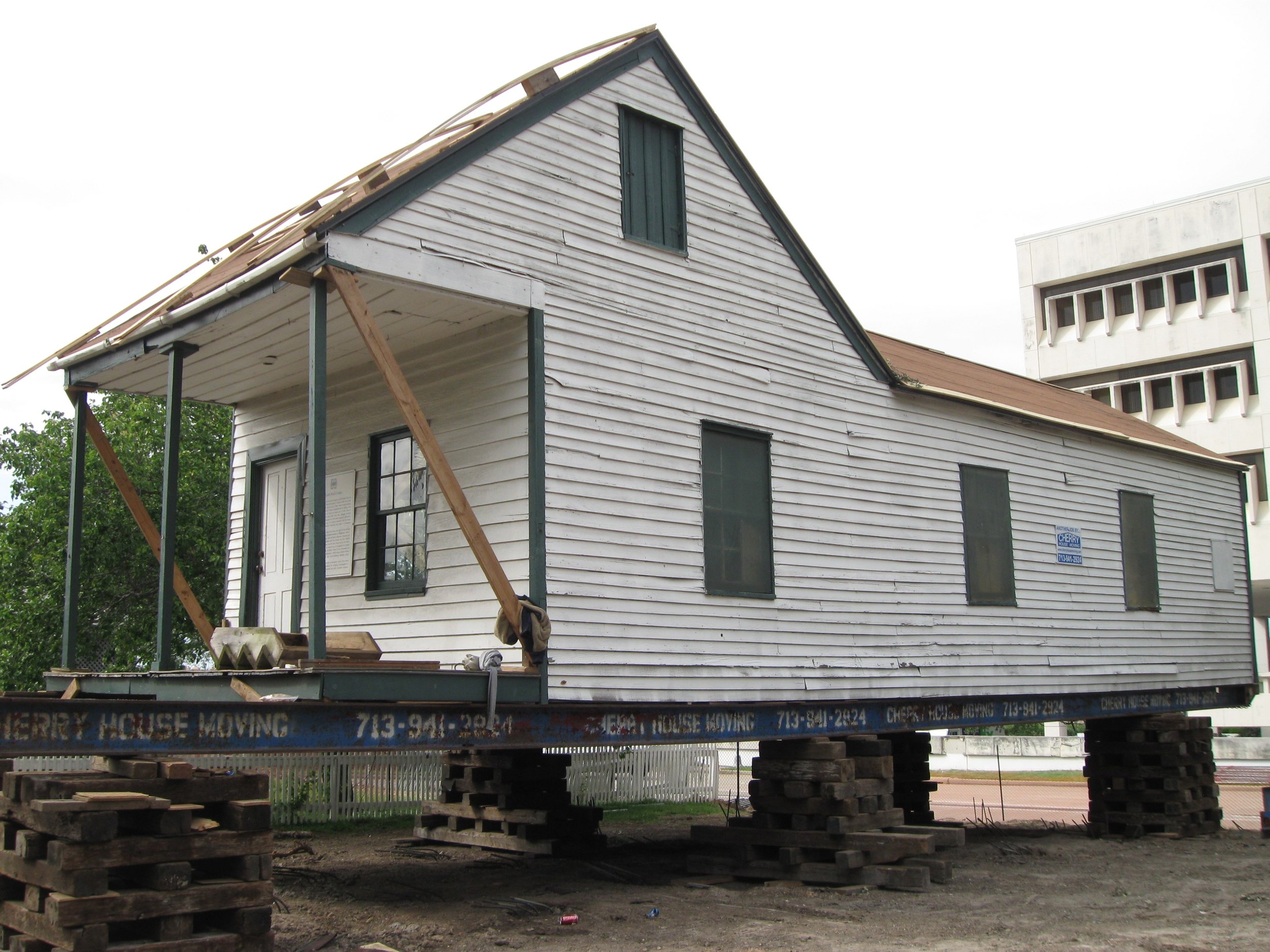On the Move:
House Moving in Houston, Then and Now
While nine of the ten historic structures in Sam Houston Park were relocated from other areas in Harris County beginning in the 1950s, house moving is nothing new. In fact, two of the structures were moved multiple times before they made their way to the park. The Baker Family Playhouse, originally constructed c.1893 at 1104 San Jacinto Street, was moved by the Baker Family a total of five times before it moved for its sixth and final time to Sam Houston Park in 2010. The Baker family cherished the playhouse and moved it along with them throughout Houston, beginning in 1899 with their move to 1416 Main Street. The playhouse was loaded onto a trailer and pulled by horses to its new location. As transportation advancements were made over the years, moving the playhouse was easier. Paved roads and trucks cut down significantly on travel times. Like the Baker Family Playhouse, Nichols-Rice-Cherry House had multiple changes of scenery over its history. In the late 19th Century, when its original location on Congress Street across from the Harris County Courthouse became too valuable for housing stock, the 1850 Nichols-Rice-Cherry House was moved to the corner of Franklin and San Jacinto Streets. In 1899, when artist Emma Richardson Cherry purchased the home, she moved it to its third location at 608 Fargo Street. The Heritage Society acquired the house in 1959. This time, instead of being moved in one piece, the house was meticulously documented, completely disassembled, and painstakingly reassembled in Sam Houston Park. The 1905 Staiti House was also moved in pieces to Sam Houston Park. Unlike Nichols-Rice-Cherry House however, which was moved in many dismantled pieces, Staiti House was moved in only two pieces.
Staiti House in two pieces
House moving was quite common in the 19th century, mainly for economic reasons. The cost of labor required to demolish and rebuild a house, plus the cost of new materials made house moving a better option. With no plumbing or electrical tie-ins, 19th century homes were autonomous objects that could be lifted from their original sites and moved to new foundations. While cold temperatures in New England aided the move of houses by freezing the ground, creating a slick surface for sliding houses to new locations, house movers in cities such as Houston had to rely on other means.
While the main principles of the house moving process—lifting, moving, and lowering—remain the same today, the tools used for each of those principles have become more advanced. Today, hydraulic jacks do the work of manual screws and jacks while steel beams and heavy duty trucks and trailers do the work of large timbers, logs, carts, horses, and oxen. While paved roads and automobiles make the moving process faster, the preparation of the house before it is moved and the situating of the house once it reaches its new location still takes a great deal of time.
4th Ward cottage on beams resting on cribbing
When the c.1866 4th Ward Cottage was moved to its permanent location in Sam Houston Park, Cherry House Moving, Inc. spent many days preparing the cottage for its journey. The cottage was cross braced throughout its interior to prevent racking during the move. The windows were covered with plywood and thin wooden boards were attached to the roofline. These boards were coated with Ivory soap—a house moving industry staple—so they could easily slide beneath power lines and tree branches. The cottage was lifted slightly to allow long steel beams to be inserted beneath its sills. Once on the beams, wheels were added and the cottage was ready to make the ½ mile trek. A large truck pulled the cottage to its new location, where the wheels were removed and the beams on which the cottage rested were coated with soap and slid onto cribbing. The cottage then awaited the preparation of its new foundation piers. With the piers completed, the house was lowered onto its permanent foundation.
House moving has a long tradition in Houston but is no longer as common as it once was. Visit The Heritage Society to see nine historic structures that were moved from within Harris County to Sam Houston Park.











